“No New Animals Are Discovered in the USA, Right?”
Posted by: Loren Coleman on February 23rd, 2011

A frequently asked question directed to me, with the seemingly not-too-subtle answer hidden in the inquiry, is “No new animals are discovered in the USA, right?”
“But, of course, there are new species found in the USA,” is my gentle but clear response.
Indeed, new animals are found constantly throughout the world, so why should the Americas, including the USA, be any different?
One of the more relevant stories is that of the discovery of the wood bison in Alberta, just north of the USA border.
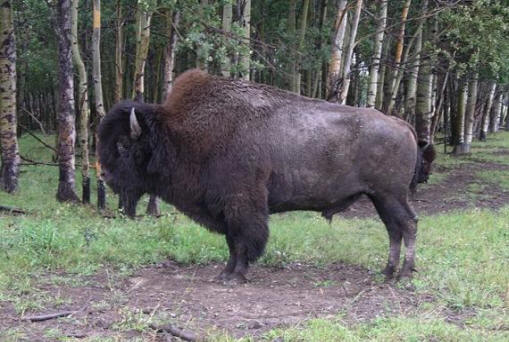
In 1957, the last remaining pure wood bison (Bison athabascae), an enormous Ice Age species not known to exist in a pure strain anywhere else in the world, was found during a regular air patrol. Federal wildlife officers flying over Alberta, trying to count whopping cranes, spotted a small, isolated herd of two hundred wood bison. The bison had gone completely unnoticed for decades – and had kept physically and genetically separate from their cousins, the plains bison, so familiar to Americans as the buffalo.
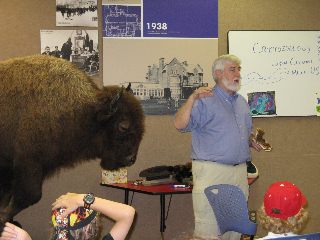
I was able to view some living wood bison, after giving a talk on cryptozoology at the Royal Alberta Museum, thanks to my guide, museum director Bruce McGillivray.
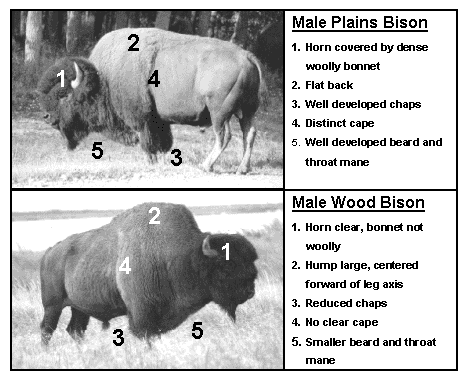
The wood bison is the largest land mammal in North America, bigger than the plains bison/buffalo.
In the USA, species of all sizes are still being discovered anew, even within the last year.
Northern Arizona University scientists released the news in August 2010 of the discovery of a new turtle in the USA, the Pearl map turtle, Graptemys pearlensis, which was found in the Pearl River in Louisiana and Mississippi.
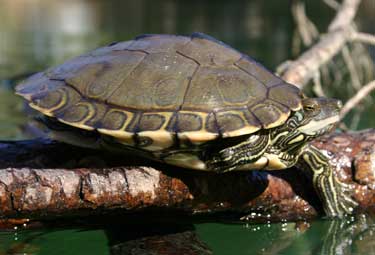
It will be recalled that in January 2011, we learned that a previously unknown species of giant crayfish, Barbicambarus simmonis, was discovered by two aquatic biologists in Tennessee.

Photo credit: L. Brian Stauffer.
In February 2011, it was announced that the half-inch-long pseudoscorpion species, Cryptogreagris steinmanni, was discovered in Colorado’s high-altitude caverns, near Glenwood Springs.
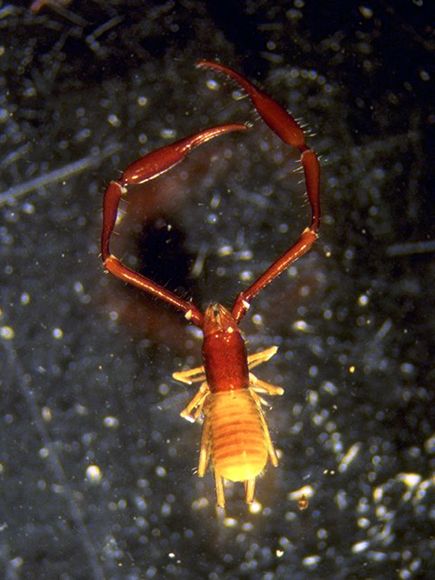
Photograph courtesy Dave Steinmann.
Will new mammals be found hidden in the wilderness areas of the USA? Only time will tell, but don’t be surprised if the future answer is “Yes.”

About Loren Coleman
Loren Coleman is one of the world’s leading cryptozoologists, some say “the” leading living cryptozoologist. Certainly, he is acknowledged as the current living American researcher and writer who has most popularized cryptozoology in the late 20th and early 21st centuries.
Starting his fieldwork and investigations in 1960, after traveling and trekking extensively in pursuit of cryptozoological mysteries, Coleman began writing to share his experiences in 1969. An honorary member of Ivan T. Sanderson’s Society for the Investigation of the Unexplained in the 1970s, Coleman has been bestowed with similar honorary memberships of the North Idaho College Cryptozoology Club in 1983, and in subsequent years, that of the British Columbia Scientific Cryptozoology Club, CryptoSafari International, and other international organizations. He was also a Life Member and Benefactor of the International Society of Cryptozoology (now-defunct).
Loren Coleman’s daily blog, as a member of the Cryptomundo Team, served as an ongoing avenue of communication for the ever-growing body of cryptozoo news from 2005 through 2013. He returned as an infrequent contributor beginning Halloween week of 2015.
Coleman is the founder in 2003, and current director of the International Cryptozoology Museum in Portland, Maine.










A good review and a good reminder, and there are many more among the arthropods, amphibians like Rana subaquavocalis, fish like the shoal bass, and small reptiles. The po’uli was the last bird in (IIRC) 1970.
Still, it also matters that the last large animal was the wood bison in 1957. Fifty-four years without any creature over a few kilograms does not mean there are no more still hiding, but it’s not encouraging for the big animals of cryptozoology.
Has anyone applied Paxton’s discovery curves to North American large animals?
While I hold out slim hope for the Sasquatch, I will be very surprised if any other large animals, land- or lake-dwelling, are still there to find.
I am here assuming the Lake Iliamna cryptids are real but a known species, and coastal marine species are possible.
Is the wood bison now recognized as a separate species? I thought it was a subspecies of the American bison (the plains bison being the other).
Loren: whopping crane? I mean, they are big and all. 😉
The species/subspecies hairsplit may not even be relevant; I believe that there was no knowledge of a population of bison, of any kind, in the area where the wood bison were found.
The sasquatch is, of course, different. The normal rules do not apply here. The bison were immediately called to the attention of authorities. An illustration of the difference can be easily conjured. Imagine if the flyover had revealed a family of sasquatch. It may have, for all we know. But it’s reasonable to presume that any such sighting would never have seen the light of scientific day, because of the significant likelihood that a pilot claiming same would have lost his job.
Squatchers come up with all kinds of reasons the species hasn’t been confirmed: remote habitat (more than any of us suspect); rarity (which seems supported by estimates, using wildlife-management models…which of course are based on *reported* sightings, a problem right there); speed of carcass disintegration; and numerous more, some of them …well let us just say science isn’t exactly prepared to go there yet.
But the most obvious and reasonable reason is never mentioned, to wit: when no one believes anyone who saw one, it doesn’t matter how many are seen, or where. The animal could even be common; it wouldn’t matter a bit. Sightings must be ACCEPTED as leads worthy of attention before the animal is confirmed.
And of course, the small-critter findings, although cool, aren’t relevant to the sasquatch discussion. The map turtle was known, just not as a separate species, probably the case with the crayfish as well.
So yeah; it’s been nothing big since 1957. But that just may be because the animals in question mark you as crazy if you say you saw one.
Ridicule prevents some people from reporting what they believe are sasquatch encounters, but certainly not all: we have hundreds of sasquatch reports, just as we have many reports of scientifically unrelated but also difficult-to-report phenomena like ghosts and UFOs.
One valid distinction is that a herd of wood bison, once discovered, is relatively easy to investigate and track. The same doesn’t apply to largely solitary primates. It’s logical that it would take longer to get solid proof of sasquatch. The question is, how long do you allow? If we have another 50 years without hard evidence, does that allow us to discount it? A hundred years?
Sasquatch, real or not, creates some very interesting debates about science, evidence, folklore, witness accuracy, and perhaps even psychology.
Matt:
You’re right; many do report. A number of the ones who report to sasquatch websites – where they will remain anonymous – say ‘look, I don’t want to be made fun of here.’ They’re still not sure they aren’t being played for fools; and they’re coming to as professional as crypto gets. Many wait years – and just as many wait decades – before they come forward. Because the websites aren’t given credibility by the scientific mainstream, we are limited to the degree to which their curators can push the search forward – which is very limited, given that almost all of them have Real Jobs, and families to take up much of their spare time.
I think that the frequency and coherence are much more demonstrable with the sasquatch than they are with UFOs and ghosts, understandable as the subject is considerably more, let’s just say earthbound and amenable to study. We have the tools in place, in the sciences now, to push the study of hairy hominoids to proof. What’s lacking is the dedication of professional/institutional time, talent and money.
How long does one wait before tossing up one’s hands? If things stay the way they are now, forever. Or at least until the reports dry up, and extinction can be presumed. (Extinction pronouncement is how we set our limits in this game. But the animal has to be confirmed.) The evidence continues to come in…and the leads continue to not get followed. As I’ve said here more than once, it’s not a case of 2+2=4 with the sasquatch; it’s a case of an endless concatenation of ones amounting to zero for want of followup, fed largely by ridicule of the topic. There’s tons of evidence. We are relying on weekenders – who have much to spend their weekends on – to set aside the ones they can for following it up.
I personally have never understood the attitude of some skeptics – Ben Radford comes to mind, and Daniel Loxford, only not so adamant about it – that ‘the case gets weaker every year.’ It gets STRONGER every year. People are continuing to see these animals and their sign. Institutions that were historically skeptical are loosening up. (National Geographic comes prominently to mind.) The field is still, however, missing its Leakey, its Galdikas, Fossey and Goodall, its Schaller – dedicated, FULL-time professionals whose opinion commands professional support and money.
If we start to see the ridicule by professionals fade away and the search encouraged; if we start to see this being put forward as a puzzle for a new generation of scientists bold enough to tackle it; if we start to recognize that the oceans aren’t all that remain unexplored on our planet; and, speaking of psychology, if we start to recognize that Occam gives much credence to the simple answer that people’s preponderant tendency is to report, accurately, what they see; then it will be time enough to talk about closing down this search soon. Or, more accurately, revving up the search until all extant hairy hominoids, however many that may be, are accounted for.
Then we’ll see what all is really in the ocean. After all, that’s a much harder job for a land animal like us.
(My daughter and I just got back from the Science and Tech Program introduction at her to-be high school; she got admitted. They have to do a big research project. I want her to look for Bigfoot. Stop me.)